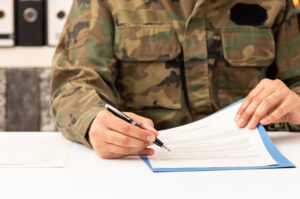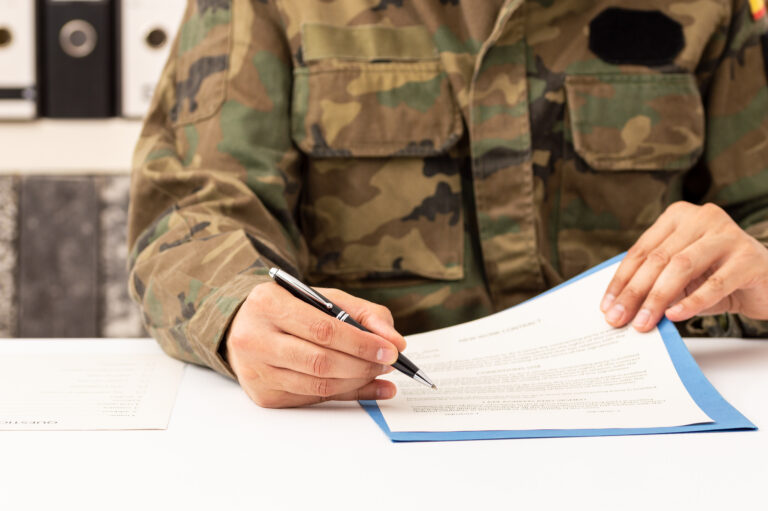Frequently Asked Questions About CAC Cards
Frequently Asked Questions About CAC Cards
The Common Access Card (CAC) is a crucial identification tool for Department of Defense (DoD) employees and military personnel. It is often surrounded by questions regarding its purpose, usage, and security. Here’s a comprehensive FAQ to help you understand more about CAC cards.
What is a CAC Card?
A CAC card is a smart card about the size of a credit card. It contains embedded circuits that allow it to store and process data. This card is issued to military personnel, DoD employees, and eligible contractors as a standard form of identification.
Who is Eligible for a CAC Card?
Active-duty military personnel, selected reserve, DoD civilian employees, and eligible contractors are issued CAC cards. Dependents and retirees receive a different identification card suitable for their specific needs.
What Information is Stored on a CAC Card?
A CAC card stores a range of data including the cardholder’s name, photograph, and a digital certificate. It also includes a personal identification number (PIN) and biometric data like fingerprints. This helps in secure authentication for physical and digital access.
How is a CAC Card Used?
CAC cards are used for accessing DoD facilities and computer systems. Swiping or inserting the card into a reader allows for authentication. The cardholder must enter their PIN to complete the process. The card also facilitates digitally signing documents securely.
What are the Security Features of a CAC Card?
CAC cards include several security features to prevent unauthorized access. The embedded chip stores data securely and encrypts communication between the card and the reader. The digital certificates are updated regularly to keep the information current and secure.
How Do You Get a CAC Card?
To get a CAC card, you need to schedule an appointment at an ID Card Office using the RAPIDS system. Required documents include official identification and proof of eligibility, such as military orders or a DoD employee badge. The office will verify your information and capture biometric data.
How Do You Update or Renew a CAC Card?
Updating or renewing a CAC card also requires a visit to an ID Card Office. It’s important to ensure that your information in the DEERS system is up to date beforehand. The process involves verifying current employment status and eligibility, followed by updating the card’s digital certificates.
What Should You Do If You Lose Your CAC Card?
If you lose your CAC card, report it immediately to your chain of command or security office. Malicious use of a lost card can be mitigated by promptly disabling the card’s access capabilities. You’ll need to visit an ID Card Office for a replacement, bringing necessary identification and documentation.
How Do You Properly Use a CAC Card for Computer Access?
Insert the card into the reader attached to your computer. Enter your PIN to authenticate. Once authenticated, you can access network systems and resources. Removing the card ends the session and protects sensitive information from unauthorized access.
Can You Use a CAC Card for Personal Transactions?
While CAC cards are not generally intended for personal use, some circumstances allow for limited exceptions. For instance, military personnel may use the card for identification during travel or at certain retail stores that offer military discounts. However, primary use remains within official capacities.
Are There Any Restrictions on Where a CAC Card Can Be Used?
A CAC card is primarily for use within DoD-related environments. It grants access to military bases, secure buildings, and defense computer networks. Its use outside these areas is limited and generally not supported.
What Happens If the Embedded Chip Malfunctions?
If the chip malfunctions, the card will be unable to communicate with card readers. This will restrict access to physical facilities and digital systems. A visit to an ID Card Office will be essential to diagnose and replace the defective card.
How Do You Configure a New CAC Card Reader?
To configure a new reader, install the necessary middleware software on your computer. Connect the reader via USB and follow the on-screen instructions for setup. Ensure your system updates certificates regularly to maintain smooth operation.
What Software Do You Need to Use a CAC Card on a Personal Computer?
You will need middleware software like ActivClient. Additionally, you need the appropriate drivers for your card reader. Regular updates from the DoD’s Common Access Card (CAC) Maintenance page will ensure compatibility with computer systems.
How Do You Store and Care for Your CAC Card?
Store your CAC card in a secure, protective holder when not in use. Avoid exposing it to extreme temperatures or bending it. Keep it away from magnetic fields and moisture. Proper care ensures its longevity and functionality.
What are the Privacy Concerns Related to CAC Cards?
While CAC cards store sensitive personal information, robust encryption and security protocols help protect this data. Nonetheless, users should remain conscious of their card’s handling and report any anomalies promptly to security offices.
How Does a CAC Card Differentiate from Other ID Cards?
The CAC card is a smart card equipped with advanced features like embedded chips and digital certificates. This stands in contrast to other ID forms, which may be simple laminated cards without electronic capabilities.
What Lessons Can Be Learned from CAC Card Implementation?
The deployment of CAC cards across the DoD showcases the effectiveness of integrated smart card systems. It highlights the importance of rigorous security measures and the benefits of streamlined access to facilities and information systems. Broader adoption could yield similar security and efficiency gains in other sectors.
What is the Lifecycle of a CAC Card?
The lifecycle of a CAC card involves issuance, usage, periodic updates, and eventual deactivation or replacement. The card’s lifespan is typically aligned with the issuer’s tenure within the Department of Defense, subject to renewals as needed.
Are There Training Resources for CAC Card Users?
A variety of training modules and resources can be found on official DoD websites. These include user guides, troubleshooting tips, and security best practices to help maximize the effective and secure use of CAC cards.
How Does the PIN Work on a CAC Card?
The PIN is a crucial security feature of the CAC card. It is required for authentication whenever the card is used. This ensures that even if a card is lost or stolen, unauthorized users cannot easily gain access to sensitive information and systems.
Can a CAC Card Be Used for Email Encryption?
Yes, CAC cards contain digital certificates that facilitate secure email communication. By using the embedded cryptographic functions, users can encrypt their emails and ensure secure transmission of classified and sensitive information.
Is Multi-Factor Authentication Used with CAC Cards?
Multi-factor authentication is indeed employed. It combines something you have (the CAC card), something you know (the PIN), and potentially something you are (biometric data). This multi-layered security model significantly enhances protection.
Do CAC Cardholders Have Obligations Regarding Card Misuse?
Cardholders must adhere to strict guidelines to prevent misuse. Unauthorized sharing or copying of the card or its data is prohibited. Misuse can result in disciplinary action. Always report suspected misuse to the security office immediately.
How Does a CAC Card Enhance Operational Efficiency?
By centralizing access credentials, the CAC card reduces administrative overhead. Personnel can swiftly gain access to multiple facilities and systems without the need for multiple IDs or passwords, streamlining operations across the board.
What Role Does Biometrics Play in CAC Cards?
Biometric features such as fingerprints are integral to the security of CAC cards. They add an additional authentication layer, making it more difficult for unauthorized users to impersonate legitimate cardholders. This biometric component significantly raises security standards.
Are There International Standards for Cards Like the CAC?
The systems and technology used in CAC cards align with several international standards for smart cards. These include ISO/IEC 7816 for chip cards and FIPS 201 for personal identity verification. Adherence to these standards ensures interoperability and security.
What Innovations are Emerging in the Space of Secure Identification?
The field of secure identification is evolving rapidly with new innovations. Mobile-based smart credentials, advancements in blockchain technology for secure transactions, and even biometric advancements are paving the way for the future of identification technology.
Can CAC Cards Be Used After Retirement?
Dependent on an individual’s retirement status, different types of ID cards are issued. The CAC is replaced by a retiree-specific card which maintains access to certain benefits and services but usually excludes the high-security access granted by an active CAC.
How is Access Control Managed Using CAC Cards?
Access control is centralized, with permissions being managed through an integrated database. When a card is scanned, its access credentials are verified against this database to grant or deny entry to facilities or systems. This centralized control simplifies management and enhances security.
What is the Process for Disposing of a CAC Card?
Disposing of a CAC card requires deactivation and physical destruction. Deactivation ensures that the card can no longer be used for access, while physical destruction prevents any possible extraction of residual data from the card’s embedded chip.
Understanding the in-depth functionalities, protocols, and management strategies associated with CAC cards is crucial for all stakeholders. The implementation of these cards showcases significant advancements in secure identification and access management, setting a robust standard for similar systems across various domains.






